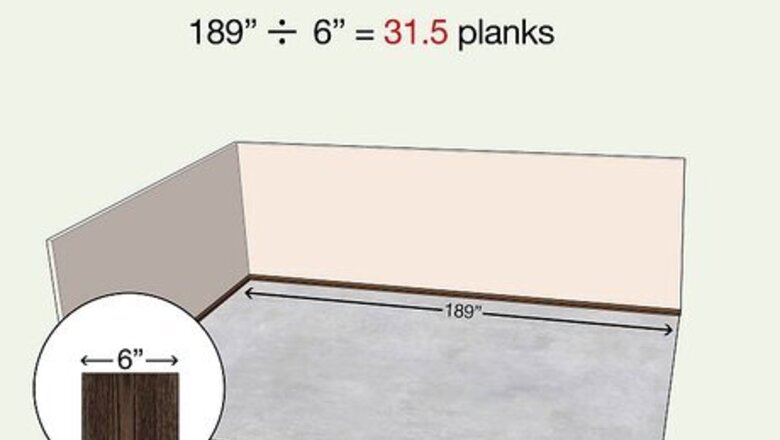
views
Planning Your Layout

Measure your room’s longest wall and divide by the width of 1 plank. Before installing vinyl plank flooring, it’s important to figure out the size of the area you want to re-floor. Start by taking accurate room measurements. Then calculate the number of rows of full planks you need by dividing your room’s width by the plank width. Calculate the width of the room in inches. For example, a 15.75’ room is 189”. Divide the width of your room in inches by the width of 1 plank. For example, you would need 31.5 rows of 6” wide vinyl planks to cover a 15.75’ wide room. Always buy 10% more flooring than you think you need to account for mistakes.
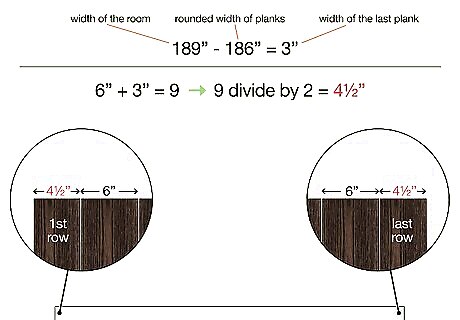
Calculate how wide the first and last rows need to be. If the width of your room doesn’t divide evenly into the width of your plank, round down to the nearest whole number. Multiply that number by the width of 1 plank. For example, 31.5 rows would round down to 31. Multiplied by 6 for a 6” wide plank would come to 186”. Subtract the combined plank widths from the width of the room to get the width of your last row. In this example 189” - 186” = 3” so the planks for your last row are 3” wide. If your last row is less than ½ the width of a plank, adjust the width of the first row by adding the width of your last row to the width of a full plank and then dividing it in half. For example, If you have 6” planks and the last row is 3”, add them together to get 9”. Then divide that in ½. Cut the first and last rows to 4½” wide for better symmetry. Use a circular saw to cut vinyl planks along the length. Scoring with a knife and then snapping the plank works well to make a plank shorter, but this technique causes a ragged edge when making a plank narrower.
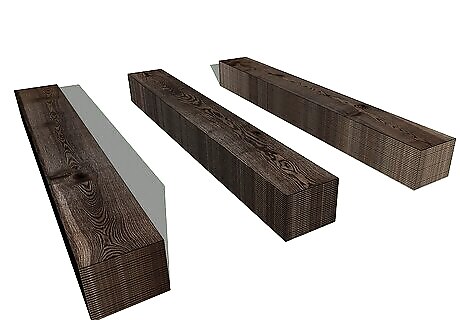
Use planks from different boxes to mix wood-grain patterns and colors. Open several boxes and pull planks from different boxes as you go. Using planks from different boxes helps ensure the woodgrain patterns and colors are evenly distributed across the finished floor. This makes your floor look more natural and your installation more professional.
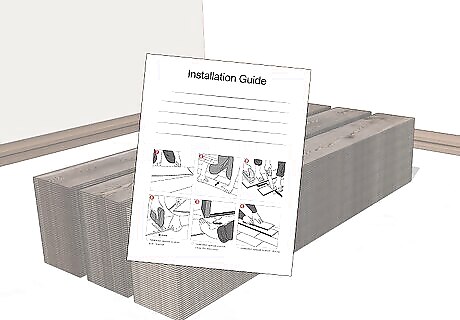
Review the manufacturer’s installation guide for specific instructions. Each manufacturer has recommendations for the most successful installation of their product. This often includes tips for snapping the planks together and how to use spacers to create an expansion gap between the planks and the wall.
Preparing for Installation
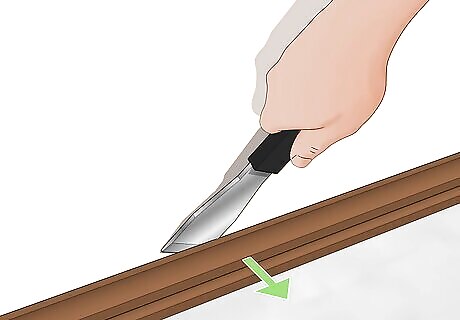
Remove any baseboards in your room. Remove the baseboards by sliding a putty knife between the board and the wall and gently prying to loosen them. Then, find the nails securing the baseboards to the wall. Use a pry bar to remove them carefully.
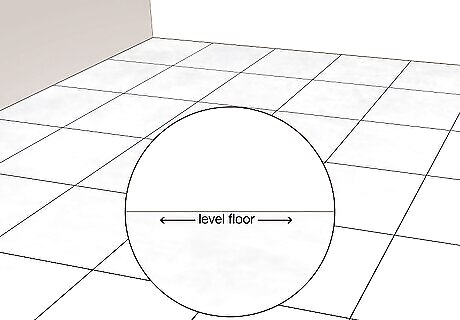
Check that your floor is level and make any necessary repairs. For the best results, vinyl plank flooring should be installed on a level surface. Spot-check different areas around the room to see if it’s level. Most floors have some natural variation. As long as the variations are less than 3/16” every 10’, you’re okay to go ahead with the installation. If your floor has uneven sections greater than 3/16”, mark them with a pencil. Then level those sections using the appropriate technique for the subflooring.
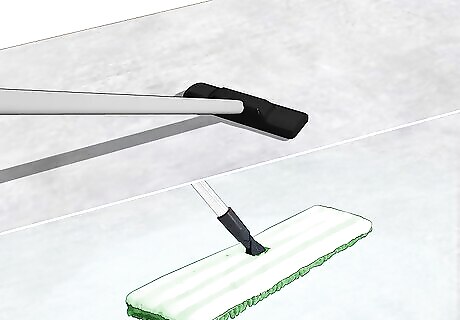
Vacuum and wash the subfloor. Sweep up any debris with a whisk broom, and then use a good vacuum cleaner to remove all of the dust. Wash or mop with a cleaner made for the specific type of subflooring. Allow the flooring to completely dry before continuing the installation.
Installing the First Row

Lay out the first row of planks without snapping them together. Start the first row with a full-length plank. Dry-fit the planks along the width of the room or the longest wall in the left-hand corner. If the last plank is less than 8” long, cut the first plank so both ends are longer than 8”.
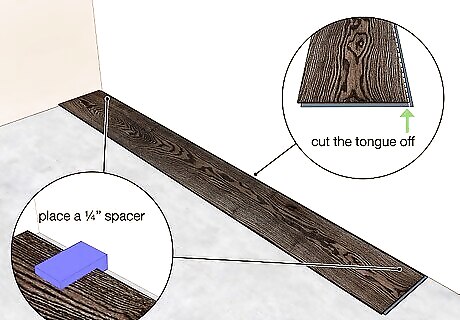
Cut the tongue off the first plank and install it along the wall. The tongue is a deep ridge along one edge of the plank that fits into a corresponding slot on a second plank. Because this side of the first row of planks faces the wall, remove the tongue with a utility knife to help minimize any visible gaps once the installation is complete. Once you’ve removed the tongue, place a ¼” spacer between the end and length of the plank and the walls to maintain your expansion gap.
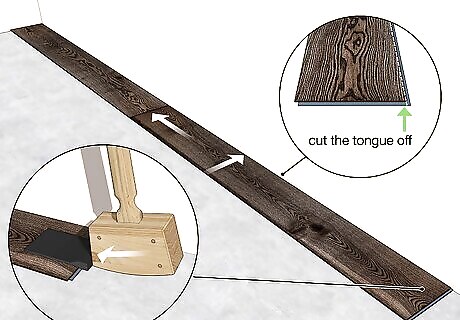
Cut the tongue off the second plank and attach it to the first plank. After cutting the tongue off the second plank, attach it to the end of the first plank following the directions in the manufacturer’s installation manual. Use a mallet and a tapping block to tap it into place gently.
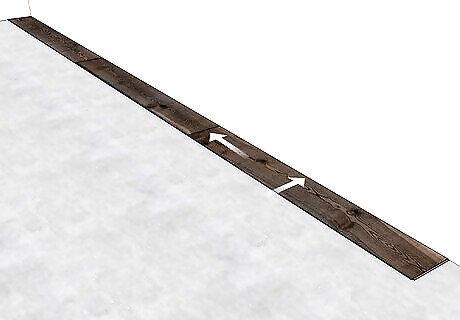
Continue to cut off the tongues and install the planks. When you have installed the final partial plank, the first row is done. Remember to only cut the tongues off the sides of the planks in the first row. Install the rest of the planks without removing the tongues.
Staggering the Second Row
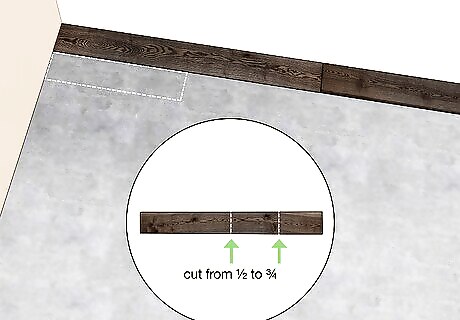
Begin the second row with a partial plank. Cut the first plank of the second row so it’s a different length from the first plank of the first row. Because the first plank of the first row is a full plank, cutting the first plank of the second row from ½ to ¾ of its length works. Hold on to cut pieces longer than 6” to 10” and use them to begin or end later rows. Use 6” as a guideline for narrower planks and 8” to 10” for wider planks. Avoid placing end joints within 6-10” of the joints in adjacent rows. End joints that are closer than 6-10” weaken the floor’s layout. This can cause planks to pop out when you walk across the floor.
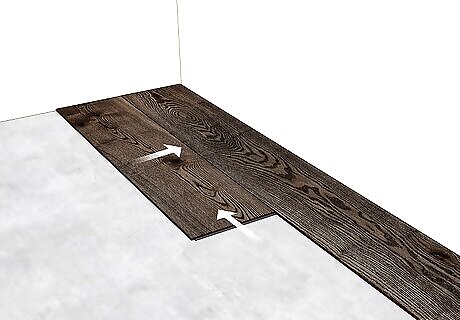
Install the first plank by fitting the tongue in the grooves on the first row. Hold the plank at an angle along the edge of the first plank of the first row. Fit the tongue of the second-row plank into the groove of the first-row plank. Push down to snap it in place.

Install the rest of the second row by joining the long side first. Always connect the long side first and then use a mallet and tapping block to tap it from the short end. When both the short and long sides of a plank are locked together, they won’t come out of alignment as you install later rows. You can use a pull bar to tap the planks close to the wall where there’s not enough room to insert a tapping block.
Staggering the Rest of the Rows
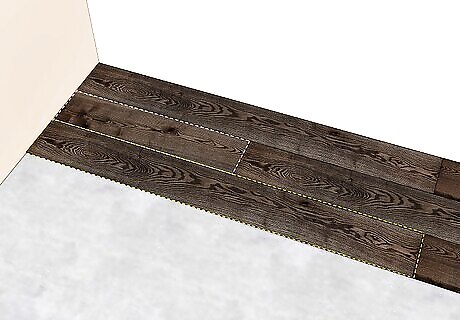
Begin each row with a different-sized plank than the rows around it. Use random plank lengths to start each row. You can either use full-length planks or any of your cut pieces that are longer than 6”. Try planning out the first plank of a few rows at a time to help you visualize the next section of the floor. After the first row, you can also use the cut piece from the previous row to start the next row as long as it’s longer than 6”. Randomly use different lengths of planks to avoid creating a stair-step pattern.
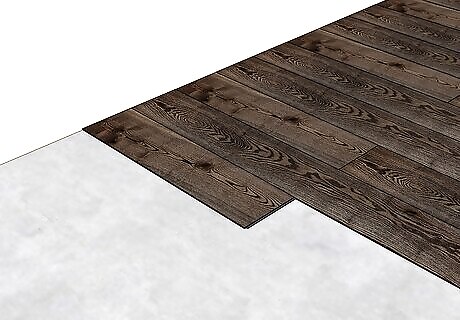
Continue building the rows by cutting and installing planks. As you work across the floor, stop and scan the entire floor to make sure woodgrain patterns and colors are evenly distributed. Remember to keep joints at least 6-10” away from those in the rows on either side. When joints line up every other row, it’s called an H pattern. Check for this pattern and choose or cut random plank lengths to break it up.

Cut planks lengthwise if necessary to install the final row. Choose a random plank length to begin the final row. Cut it to the appropriate width to fit the leftover space. Don’t forget to leave a ¼” expansion gap. Continue cutting the width of each plank and installing it until you reach the end of the row.
Finishing the Installation
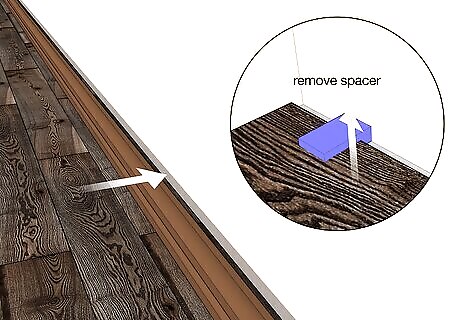
Remove the spacers and reinstall the baseboards. Once you have installed all of the planks, remove the ¼” spacers from the expansion gap. Check the original baseboards for cracks. If the baseboard is still solid, reinstall it to the wall using finishing nails. Installing new baseboards is another project, so try to remove and store the baseboard with care to avoid damaging the original pieces. If you do crack or break one of your baseboards, you’ll need to buy new boards, measure out the length of the wall, and trim the boards to fit over the vinyl.
Pros & Cons of Vinyl Plank Types
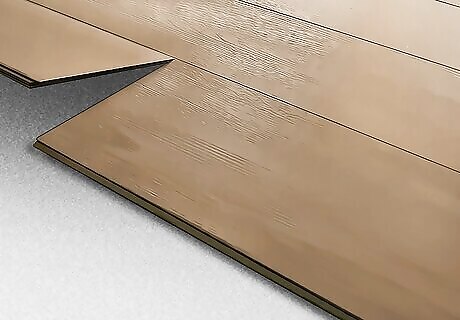
Luxury Vinyl Plank Luxury vinyl plank (LVP) is a newer type of vinyl flooring that looks similar to laminate flooring but offers greater water resistance. This flooring is thicker, more rigid, and more durable than the older peel-and-slick vinyl flooring but is still flexible. These planks have multiple layers and feature a realistic wood look. Pros: LVP is available in realistic wood-look patterns, and the finish is scratch- and water-resistant. Cons: It’s also not 100% waterproof, so it might not be a good choice for bathrooms. Some LVP products are glued down, making them harder to remove. Thinner LVP planks can show ridges and grout lines when installed over existing floors.
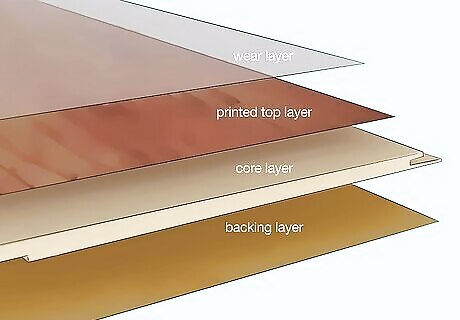
Wood Plastic Composite Wood plastic composite (WPC) plank flooring is a rigid vinyl flooring plank with a 100% waterproof core made of a wood and plastic composite mixture. These planks feature a 3D-printed layer that gives them a realistic natural wood appearance. WPC is also a floating floor that’s easy to maintain and can be installed over your existing hard flooring. Pros: The WPC plank’s waterproof core makes it suitable for installation in kitchens and bathrooms. It is more durable than LVP and can withstand heavy foot traffic. This floating flooring features a click-locking system, so it’s not glued down. Cons: WPC vinyl planks can’t be refinished, so you have to replace the floor if you want to change its appearance. If you damage a plank, it’s extremely difficult—if not impossible—to replace it. Take your time choosing a versatile color and pattern and a wear layer of at least 12 mil for residential areas with modest foot traffic.

Stone Plastic Composite Similar to WPC planks, stone plastic composite (SPC) vinyl planks are more durable because their core is mixed with stone instead of wood. These planks are less likely to dent under heavy furniture than WPC but are less comfortable to stand on. Pros: The stone composite core makes these planks almost indestructible, making it great for homeowners with children and pets. Cons: SPC has less cushioning than WPC. This type of flooring can be more expensive than LVP and WPC. Not all options are suitable for installation in sunny rooms because they can fade. Look for UV-resistant products for sunrooms and closed-in porches.
















Comments
0 comment